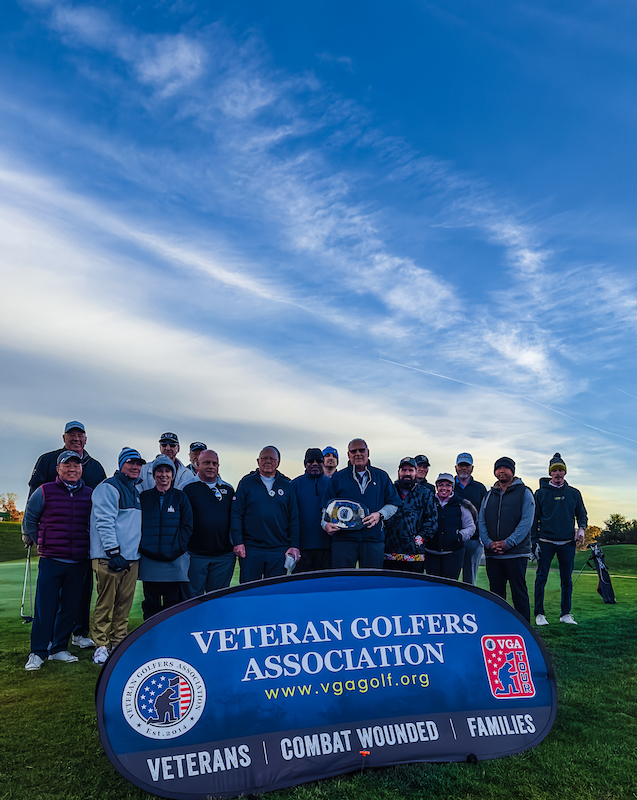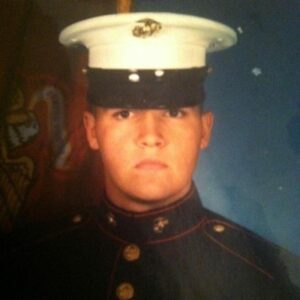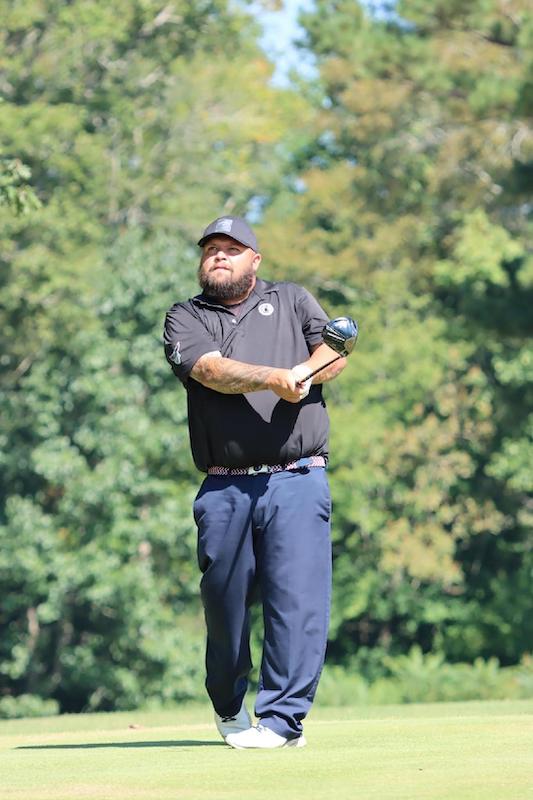How the Veteran Golfers Association Creates Community
There are all kinds of careers in the golf world—unsurprising, given that the sport is an 84 billion-dollar-a-year industry. Amid that massive economy revolving around our swings on the greens, some golfers have found purpose and community, forged out of common life experiences.

Andy Tschumper is one of those remarkable golfers. Andy is the assistant professional at the Woods Resort in Hedgesville, WV, right outside of Martinsburg. He’s also the director of the Maryland Chapter of the Veteran Golfers Association.
Before Andy joined the Marine Corps in his youth, he played golf sporadically with his dad. Andy gave up high school football in order to play on his school’s golf team, but he never thought golf would become his life’s career.

“I was 22 years old in 2003 when I left the Marine Corps,” Andy told me in our interview. “I was married. I’d just had a baby. My daughter was maybe three weeks old at the time. I had no idea what I was going to do. I was in California, and I didn’t have a job lined up. That’s when someone offered the idea of going to golf school.
“For lack of better words, I said, ‘What the hell is golf school?’
“He proceeded to tell me that his wife worked at the San Diego Golf Academy and was the Director of Admissions. He told me he would get me an application.
“I said, ‘Nah, don’t worry about it.’ He still brought me the application, and he demanded I fill it out then and there so he could bring it to his wife as quickly as he could. He took it back home, gave it to his wife, and I got accepted into the school.”
The program was officially an Associate’s degree in golf complex facilities management.
“At the time I didn’t even know what the PGA was,” Andy said. “I found that out about my second semester. I didn’t know about any of that stuff.
“The school was neat. We had your typical college courses, and then we had golf courses. We learned the rules of golf and the history of golf. We had tournament golf every Monday, and I got to do club repair.
“I absolutely love club repair. One of my favorite things to do is just to help people fix golf clubs.”
Many of Andy’s teachers were PGA professionals. They taught him how to teach.

“It taught me how to teach others right, but it also taught me the operations and all the different things that I didn’t even know you could learn,” Andy said. “They taught me everything I needed to know.”
Andy helped clear up some terminology that often gets mixed up in professional golf.
“A common misconception in the golf world is the term ‘professional golfer,’” Andy said. “There’s a professional golfer, and then there’s a golf professional. Working at the golf course means you’re a golf professional; you play when you can. There are a lot of local golfers that work in golf courses that are really good golfers.”
Although Andy plays a 2.9 handicap, he said he rarely gets to practice.
“The only time I really ever practice is when I’m giving a lesson,” he said. “This morning I gave a short game lesson, and that was actually a lesson for my student and myself. That’s how I refresh my memory. My favorite part of this job is giving lessons, hands down.”
Although he works full-time as a golf professional at the Woods, Andy is actively engaged as a chapter director for the VGA.
“I joined the VGA in 2020 because a friend of mine at Locust Hill, Jared Shank, said, ‘I’m playing Trump National in DC for a VGA event,’ and I said, again, ‘What the hell is that?’ He told me about it, and I was immediately interested. I joined on their website and entered that same tournament.”
Andy hails from the Marine Corps, but the Veteran Golfers Association is for all five branches of the military. The VGA seeks to motivate veterans, active duty soldiers, and family. There are 48 VGA chapters in the United States. There are even chapters in Germany, Bahrain, and Australia. The total current VGA membership is over 21,000 golfers.
“The number one number I’ll tell you of the VGA, though,” Andy proudly told me, “is zero suicides. In the veteran community, there are about 22 suicides a day, but there are zero suicides from VGA members.”
Andy’s second VGA tournament was at Stonewall Golf Club in Manassas, VA.
“That was one of the worst rounds of golf I’ve had in 15 years,” Andy said. “I think I shot 97 that day. It was awful. It was raining, and I was in a bad mood. I played nine holes of some of the worst golf I’ve ever played.
“One of the guys I was playing with was a retired Sergeant Major. And he said to me, ‘Don’t give up. It’s not about the golf.’
“That didn’t register with me right away. He got me a beer and said, ‘Just play your game. Have some fun.’
“So I proceeded to hit a three-wood into the hill. I had to take a drop again. He went and got me another beer. We finished that nine, and it was one of my worst days of golf, but it turned out to be one of the best rounds I’ve ever played for my life.
“I learned that the VGA is not about the score. It’s about the people you’re with and the veterans that are around you.”
After that match, Andy reached out to a VGA director and asked to get an event in West Virginia. That’s when he learned the VGA needed an assistant director in Andy’s state. He began running tournaments in West Virginia, at courses like the prestigious Pete Dye Golf Club in Bridgeport, West Virginia, a Top-100 course.
“I started to bring in some better courses, and the VGA told me they needed a new director of Maryland, and since I’m so close to Hagerstown, MD, I took responsibility for the state.”
VGA golf tournaments include multiple unique flights to honor veterans and their families. There’s a wounded flight, which lays only golfers who’ve received the Purple Heart medal. There’s also senior flights, family flights, and more.
If you’re interested in supporting or joining the VGA, head to its website, vgagolf.org, and find the email address for your local chapter director.
Before we finished our interview, Andy had one very important thing to add:
“Shout out to all my Marine Corps brothers and sisters, Seventh Comm, Ninth Comm, and Semper Fi.”
Jefferson Burgess
Editor
Jefferson holds a degree in psychology from Westminster College (SLC, UT). Career experience includes working in design, marketing and sales.
Photography, design, music, food, golf, the outdoors, running, story telling are all things he enjoys.






